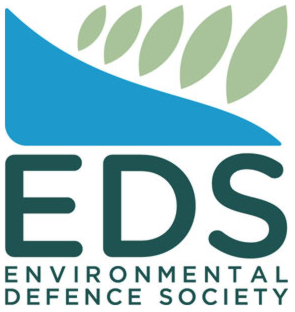Potentially dangerous fire extinguishers targeted
1 December 2002 Media Statement
Potentially dangerous fire extinguishers targeted
The government and the fire protection industry are co-operating to get rid of potentially dangerous yellow halon fire extinguishers most commonly used in boats, caravans and baches, Environment Minister Marian Hobbs announced today. They will share 50/50 the collection and destruction costs of old, unreliable and environmentally damaging yellow halon fire extinguishers.
"On this first day of summer people should be looking to replace their halon fire extinguishers with red extinguishers before they head out in their boat or to their beach house," Marian Hobbs said.
"Halon fire extinguishers are extremely dangerous, not only because they may fail in a fire but because halon 1211 is very damaging to the ozone layer. The amount of ozone destroyed by one small fire extinguisher would fill many hundreds of dairy tankers.
"We hope the zero cost of handing in their yellow extinguisher when they buy an approved red extinguisher will be an incentive for people to not only make themselves safer but also to help protect the environment."
Yellow extinguishers have not been manufactured or comprehensively serviced in New Zealand since the early 1990s and may fail in a fire. They were once commonly found in homes and workplaces but as they became out of date they have gradually moved to baches, caravans and boats.
When yellow extinguishers are recovered they are sent to Australia for destruction in purpose-built facilities. This costs $20 per extinguisher and will be covered by the fire protection companies and the Ministry for the Environment.
Fire protection companies including the two biggest, Wormald Fire Protection and Chubb Systems & Services are also offering special prices on new red fire extinguishers when yellow fire extinguishers are handed-in.
Consumers can also call: 0800 HALONHELP for information about participating retailers in their area.
Background material is attached.
ENDS
December 2002
BACKGROUND
Halons, ozone layer protection
The facts
- Halons are highly ozone destructive.
- Yellow fire extinguishers contain Halon 1211. They can’t be serviced in New Zealand so may not work in a fire.
- The Ministry for the Environment ran a recovery campaign in 2001 targeting the business community. Approximately 10,000 yellow extinguishers were recovered from industry.
- Starting on the first day of the 2002/03 Summer, the Ministry for the Environment is targeting boat, caravan and bach owners, who possess the majority of yellow extinguishers still left in the country.
- According to the 2001 Census there are:
- 300,000 boats in New Zealand
- 8,811 baches or holiday homes
- 3,042 caravan, cabin, tent or mobile units in a motor camp
- 1,386 mobile units not in a motor camp.
- Government subsidies are available for the collection of Halon 1211 for a limited period only.
- Halon Recycling Ltd is a non-profit-making company and arranges for transport and destruction of Halons and advises on alternatives.
- New red fire extinguishers cost approximately $75 -$100, however fire protection companies including Chubb Systems & Services and Wormald Fire Protection are offering special prices when yellow extinguishers are handed in.
- There is an 0800 number for consumers: 0800 HALON HELP / 0800 425 664
Why are Halons a concern?
- The manufactured substance Halon was once widely used as a fire extinguishant.
- Halons destroy many hundreds of times their own weight in atmospheric ozone - the amount of ozone destroyed by one small fire extinguisher would fill many hundreds of dairy tankers.
- There are two types of Halon: Halon 1301 was used in fire protection systems and Halon 1211 - BCF was used in fire extinguishers in New Zealand.
- Halons haven’t been imported since the early 1990s but we do have many tonnes left in older systems.
- The Ministry for the Environment has developed a plan to collect and safely destroy any Halons that are no longer in use. The strategy is based on a partnership between the Fire Protection Industry, through Halon Recycling Ltd and the Ministry for the Environment.
Halon 1211 (bromochlorodifluoromethane)
- Halon 1211 was once widely used in yellow, hand-held fire extinguishers and in fixed fire protection systems in unoccupied spaces such as substations or computer rooms.
- Halon 1211 has largely been superseded by more modern, ozone-friendly products.
- Halon 1211 is sent to Australia for environmentally safe destruction at the DASCEM plant in Melbourne. The current cost for transport and destruction is approximately $20 per kilogram. For a limited period, the Ministry for the Environment will pay a 50 per cent subsidy towards this cost with Fire Protection Companies including Wormald Fire Protection and Chubb Systems & Services paying the other 50 per cent when consumers return their yellow extinguisher to them.
- Halon Recycling Ltd, a non-profit-making company set up by the Fire Protection Industry, is administering the subsidy. Halon Recycling Ltd can help with arrangements for transport and destruction of Halons and advise on alternatives. “Proof of destruction” certificates are supplied by DASCEM for material sent through Halon Recycling Ltd.
- There are no regulations prohibiting the legitimate use of, or holding stocks of, Halons so no penalties will apply to companies continuing to use the material, however, deliberate and unnecessary release is an offence under the Ozone Layer Protection Act 1996.
Halon 1301 (bromotrifluoromethane)
- Halon 1301 is the most ozone-destructive substance known.
- Halon 1301 is still essential where lives are at risk in occupied spaces in aircraft and some ships. Organisations that still need Halon 1301 for shipping or aviation should contact Halon Recycling Ltd for advice.
- There are no spare parts or replacement Halon to reinstate land-based systems. Any operated by detonators are beyond the “use by” date for these devices.
- We advise companies with Halon 1301 in computer rooms or other spaces where it is not essential for life safety to plan now for decommissioning by 2003.
- Subsidies have not been paid for Halon 1301 because it had good resale value until mid-2001. It is not yet clear that the market will recover but firms planning to decommission should consult Halon Recycling Ltd.
Why does the ozone layer matter?
- Most of the ozone in the atmosphere is concentrated in a thin layer mainly in the stratosphere, 10 to30 kilometres above the Earth's surface. It forms a screen and absorbs most of the damaging UV radiation present in sunlight, such as the UV-B rays-the type that causes cancer in humans and damages plants.
- When the ozone layer is damaged more UV rays pass through and reach the earth. Increased UV radiation can be damaging to human health, reduce plant growth, damage some marine life and lead to faster destruction of plastics.
- Southern hemisphere countries like New Zealand are more at risk of ozone layer damage.
Further information
- Contact either the local fire protection company.
- Halon Recycling Ltd
0800 HALON HELP (0800 425 664)
PO Box 302 372, NHPC, Auckland
e-mail: fpanz@clear.net.nz
- Ministry for the Environment’s ozone layer protection programme:
Ministry for the Environment
PO Box 10362
Wellington
Ph (04) 917 7400
Fax (04) 917 7523
Email: information@mfe.govt.nz


 Gordon Campbell: On The Mock Horror Over Political Profanity
Gordon Campbell: On The Mock Horror Over Political Profanity Hon Matthew Robson: Former NZ Associate Minister Of Foreign Affairs Calls On NZ Government To Uphold International Law
Hon Matthew Robson: Former NZ Associate Minister Of Foreign Affairs Calls On NZ Government To Uphold International Law Save The Children: Budget 2025 Must Commit To Improving Children’s Well-Being
Save The Children: Budget 2025 Must Commit To Improving Children’s Well-Being Community Access Media Alliance: CAMA Urges Government To Recognise Community Access Media As Lifeline Utility In New Emergency Management Laws
Community Access Media Alliance: CAMA Urges Government To Recognise Community Access Media As Lifeline Utility In New Emergency Management Laws NZ Customs Service: Man Sentenced To 4 Years & 9 Months’ Imprisonment Following Customs Investigation Into Child Sexual Abuse Material
NZ Customs Service: Man Sentenced To 4 Years & 9 Months’ Imprisonment Following Customs Investigation Into Child Sexual Abuse Material Human Rights Commission: Human Rights Commissioner Says The Cost Of Limiting Gender Rights Under Legislation Will Be People's Lives
Human Rights Commission: Human Rights Commissioner Says The Cost Of Limiting Gender Rights Under Legislation Will Be People's Lives New Zealand Government: Social Security Amendment Bill Passes Into Law
New Zealand Government: Social Security Amendment Bill Passes Into Law


